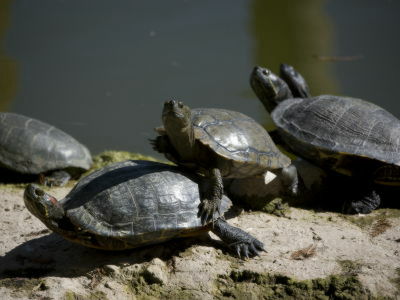More than 50% of sloths 'die when they poop', why do they poop in a dangerous way?

Why 50% of Sloths Die While Pooping-YouTube
Sloths are animals that live in tropical rainforests in Central and South America, and they hang on trees for a long time and hardly move, and even if they move, they move very slowly, so they are named Sloth (lazy / lazy) .

It is a sloth that eats leaves etc. while hanging from the tree even when eating ... ...
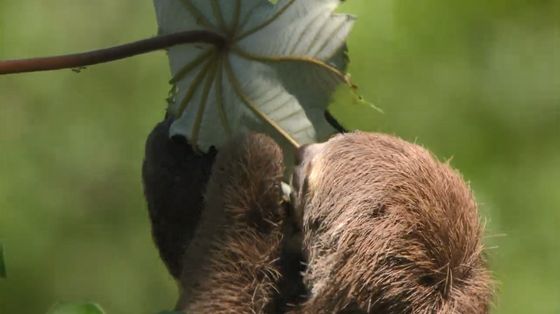
About once a week, they come down to the ground to poop.

However, it is a strange choice for sloths who live in trees to go down to the ground and defecate rather than defecate while hanging on the tree.

A 2014 study found that more than half of the deaths of adult sloths documented by the research team were caused by predators attacking them when they were near the ground during a bowel movement. In other words, it can be said that descending from trees to defecate is a very dangerous act for sloths.
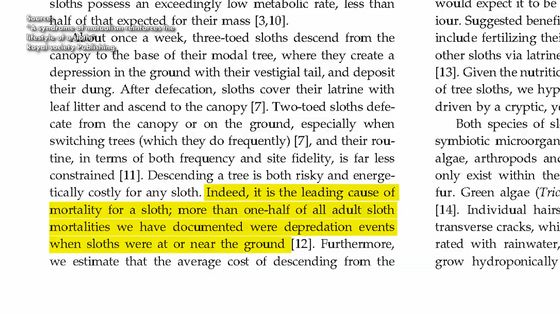
In addition, it is estimated that the act of going down to the ground to defecate accounts for 8% of the energy consumed by sloths in a day. It is unnatural for sloths, who have survived by establishing a lifestyle that consumes as little energy as possible, to perform defecation, which is very energy costly.

BioArk points out that it's important to understand sloths more deeply to know why sloths defecate near the ground.
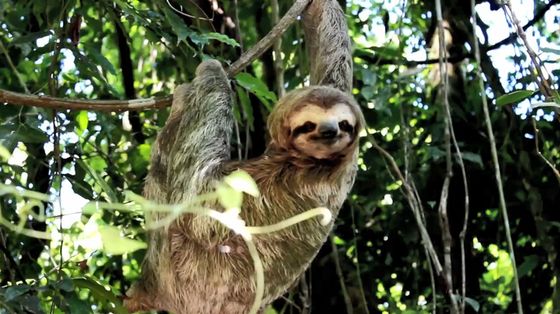
Sloths are classified into the families Three-toed sloths and Two-toed sloths, of which three-toed sloths have three toes on their front legs and two-toed sloths have two toes on their front legs.
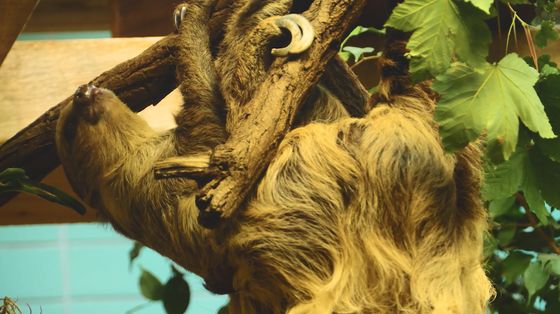
The movement speed is about 13 feet per minute (about 3.9 meters), and even if the crisis is imminent, it can only speed up to about 15 feet per minute (about 4.6 meters).
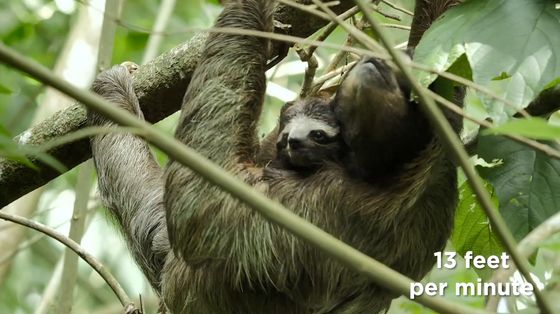
Surprisingly, sloths can swim, but they still move slowly.

However, the slow movement of sloths also serves as a defense against predators. Since the main predators of sloths living in trees are birds such as

Less movement also helps reduce the amount of energy needed to survive. The two-toed sloth eats not only leaves but also fruits and small lizards, while the three-toed sloth only eats leaves. Since leaves contain little energy, the three-toed sloth specializes in reducing energy consumption as a survival strategy.
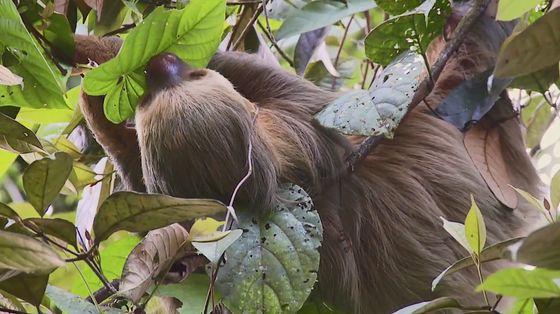
Sloths sleep for 15 to 18 hours a day, and are cold-blooded animals that are rare among mammals, and their body temperature can fluctuate up to 5 degrees depending on the outside air. This creates a low-energy state like hibernation and keeps the basal metabolic rate much lower than other mammals.
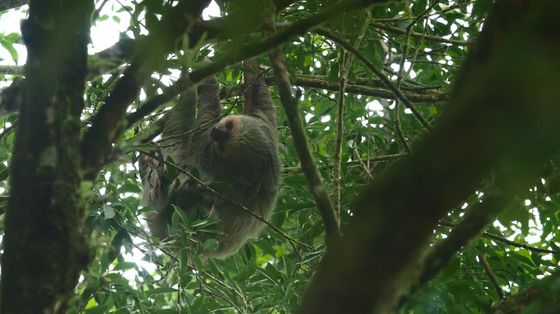
Also, normal mammals have muscles of 40 to 45% of their body weight, but sloths have about 30% of their body weight. Sloths who live in trees specialize only in the muscles necessary for hanging from trees, and they may continue to hang on trees even after they die.
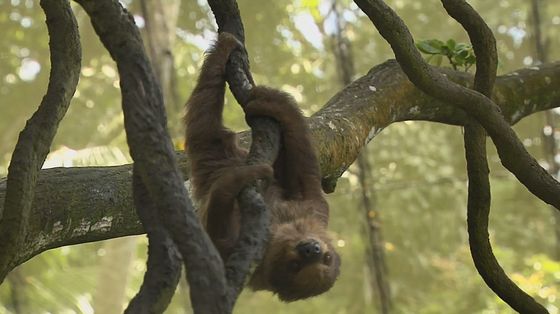
On the other hand, the muscles that are specialized for hanging are not suitable for moving, so the movement speed is very slow.
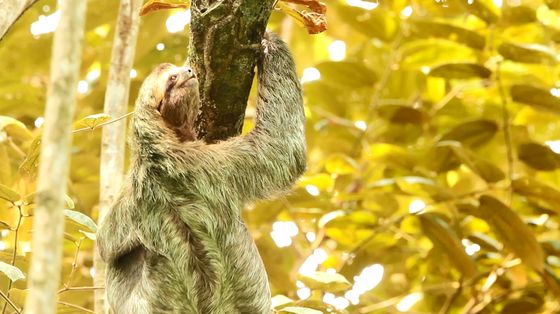
It is also known that sloths that hang upside down and spend a long time
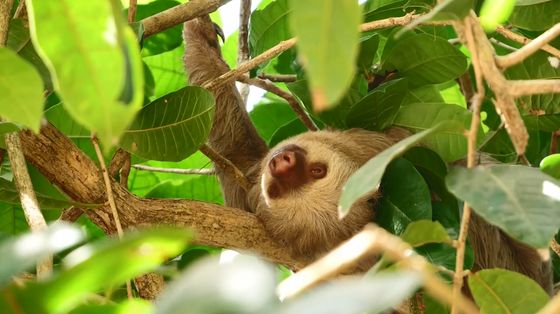
Sloths digest food with the help of intestinal bacteria, so it can take up to 30 days to digest a single leaf. Therefore, when the activity of intestinal bacteria slows down in the cold season, the speed of digestion slows down, so sloths eat less as it gets colder.
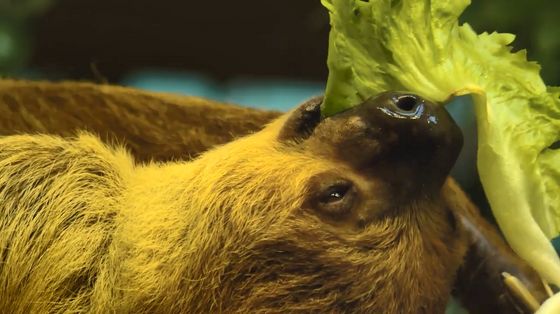
Also, sloth babies grow up with their mothers ... ...
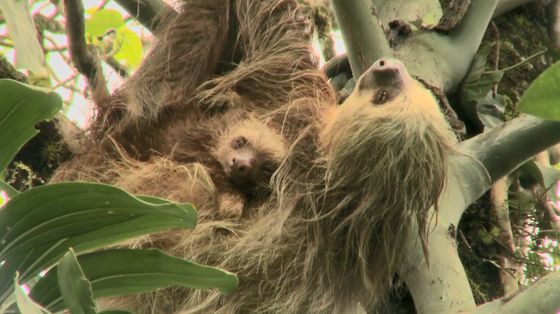
When the baby falls to the ground, the mother does not go down to retrieve it.
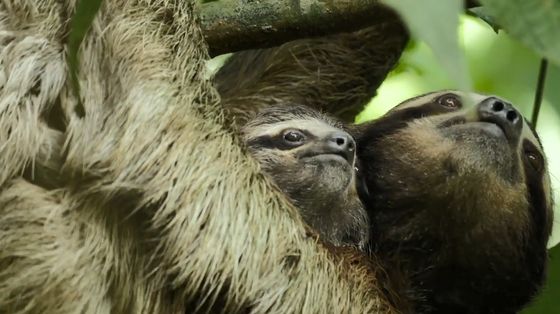
BioArk points out that there is a ``small ecosystem'' in the fur of sloths, which thoroughly suppresses such energy consumption, and that this is related to special defecation habits.

In addition to small mites, moths live in sloth fur. This moth is believed to be in a symbiotic relationship with sloths, and is related to the amount of 'algae' that grows on the sloth's fur.

The green color of the sloth's fur is due to the growth of algae, not the color of the fur itself. Algae on their fur not only serve as camouflage in the rainforest, but also serve as a 'snack' for sloths. Fur algae are rich in lipids and are thought to help ferment carbohydrates.

The more moths that live in a sloth's fur, the more nitrogen it contains and the denser the algae that feed on it.
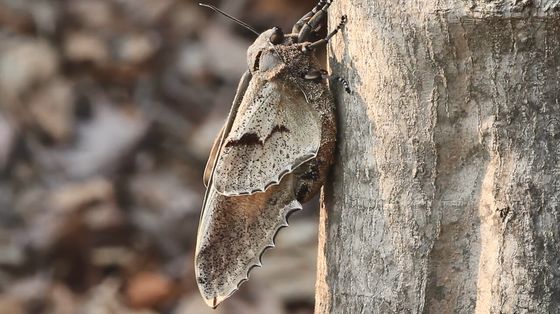
This moth will then plant its eggs in the droppings dropped on the ground by sloths. The larvae grow up eating feces, and when they become adults, they fly off in search of sloths. So, BioArk introduces the theory that `` sloths use symbiotic moths to grow algae as snacks, and take risks to descend to the ground and defecate.
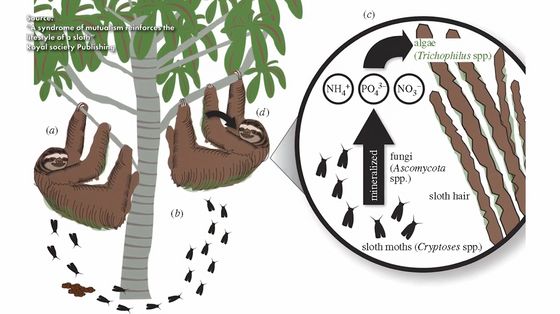
The average sloth has 125g of algae, which is 2.6% of its body weight.
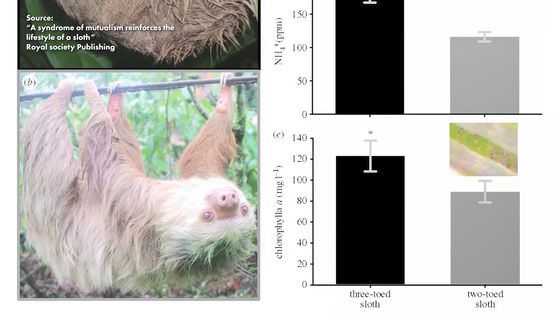
In addition, if you consider the weight of 2.6% of the body weight in terms of human beings, it will be as heavy as a small dog.
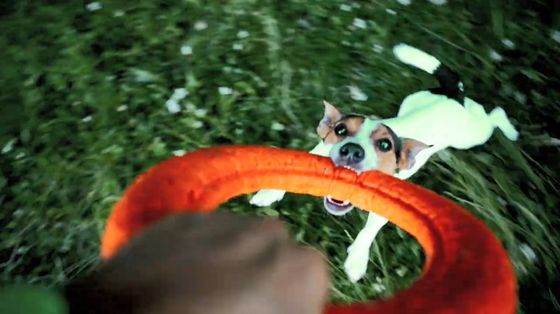
The amount of algae growing on the fur is more in the three-toed sloth, which eats only leaves, than in the two-toed sloth, which eats a lot of food, and the three-toed sloth is more likely to descend to the ground and defecate.
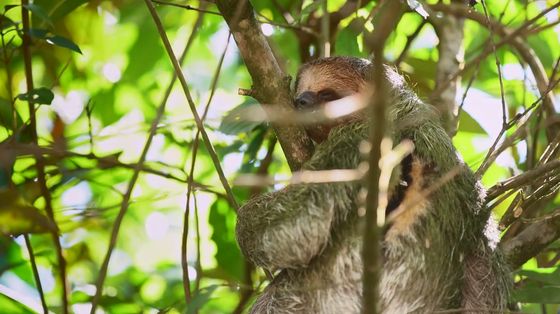
On the other hand, it seems that there are pros and cons to the theory that 'the moth that grows algae takes a risk and descends to the ground to defecate'. Some point out that `` sloths actually eat fur algae less frequently '', while others point out that `` algae growing on fur from the stomach of sloths was found ''.
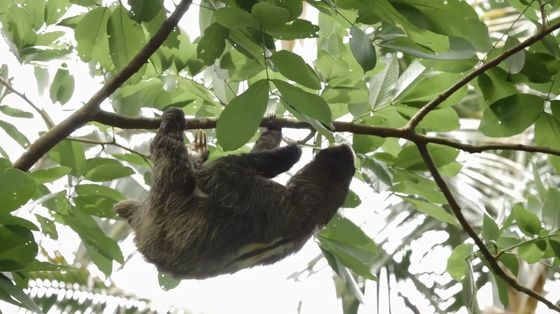
There is also a theory that the sloth's defecation pattern is related to the female's estrus cycle, and BioArk said, 'There is still room for debate about the strange defecation habits of sloths.'

Related Posts:
in Free Member, Video, Science, Creature, Posted by log1h_ik





